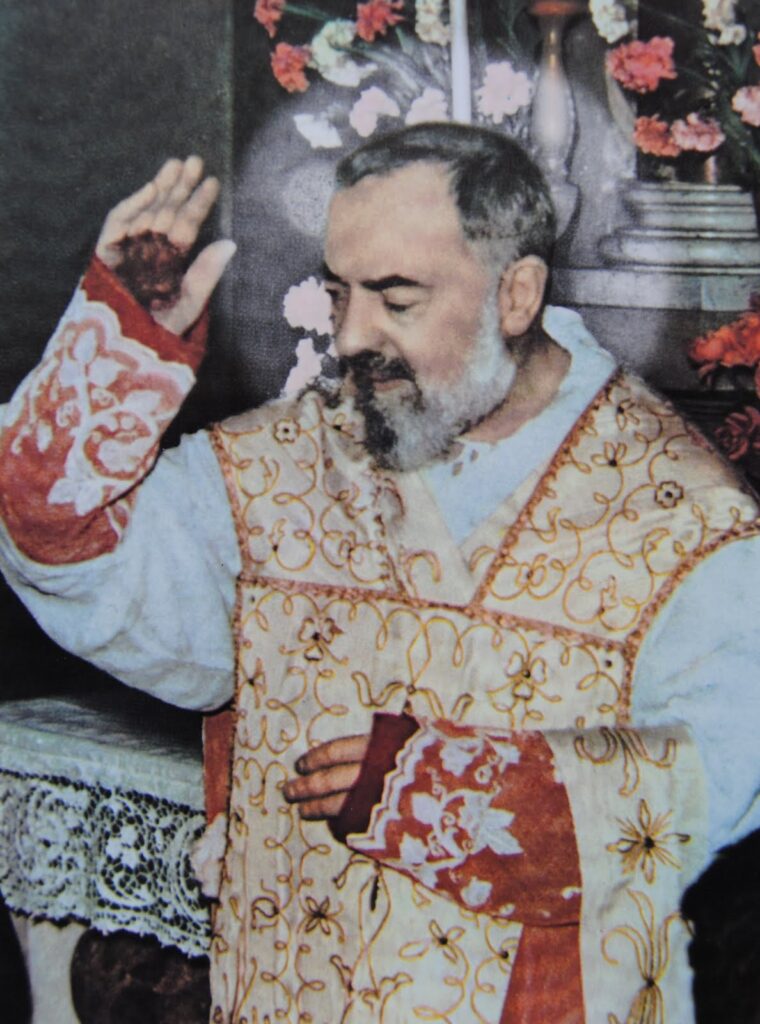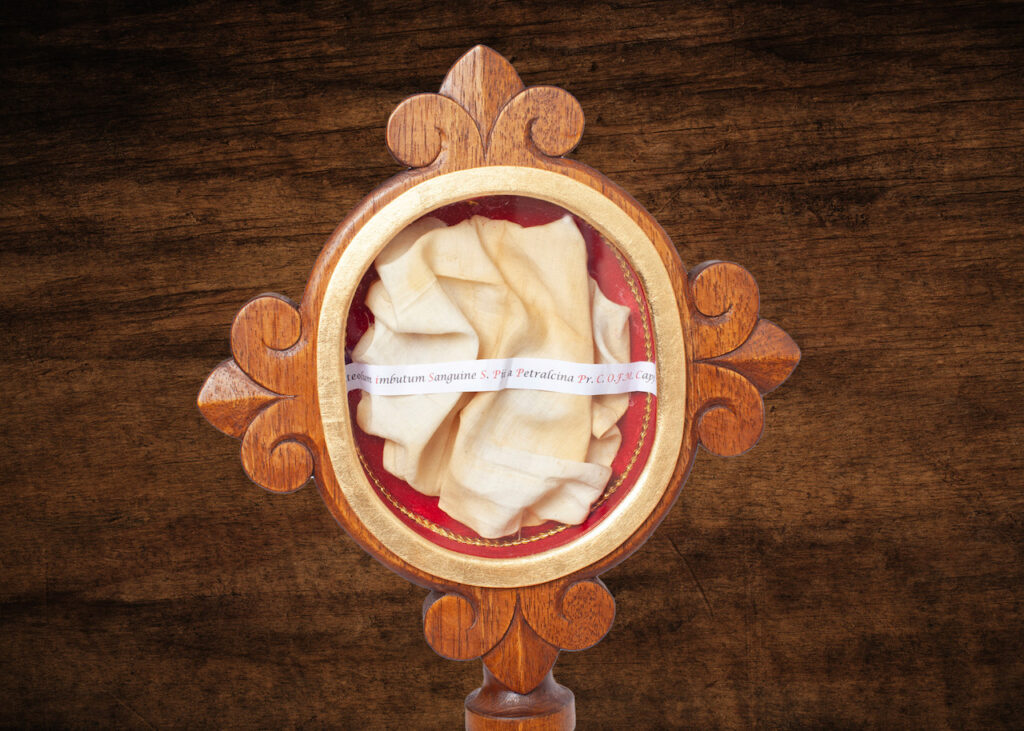This week, a Tidewater parish is hosting relics of St. Padre Pio, the Capuchin friar canonized in 2002.
The items will be on display for one day, Oct. 6, at St. Bede, Williamsburg.
The five relics include cloth stained with his blood and a piece of a habit he wore during his time in a monastery in the city of San Giovanni Rotondo in southeastern Italy. They were all provided by the St. Pio Foundation, a non-profit group devoted to the saint’s memory.
“The feeling that many have when they go and experience the opportunity to visit the relics of St. Pio is hope,” said foundation CEO and founder Luciano Lamonarca. “And not only do they ask for hope, many ask for physical healing or mental healing. It is believed that praying in front of the relics of a saint … offers a more powerful tool, and it also reminds us of the spirituality and the holiness of the man.”
Such rituals also help people deepen their knowledge of Christ, according to St. Bede’s pastor, Father Eric Ayers. “We come to know and appreciate Christ more when we see how he worked in the lives of the saints – through the overcoming of obstacles, through miracles, through ordinary lives lived faithfully,” he said.
The Oct. 6 event will start with a procession of the relics at the daily 9 a.m. Mass, which will be celebrated in honor of St. Pio. Veneration will continue until closing prayer at 6:45 p.m. Since the foundation started this tour in 2016, the relics have appeared in 82 dioceses in the U.S., as well as dioceses in Canada, Mexico and Ireland.
Born in 1887, Francesco Forgione joined the Capuchin order when he turned 15, taking the name of Pio in honor of St. Pius I. He became known for his piety and devotion, saying the rosary several times a day and confessing for hours at a time, according to Lamonarca.

In 1910, the year he was ordained, he showed the stigmata, the marks of the crucified Christ. Though those wounds healed, they returned about eight years later and remained until his death at age 81.
“A remarkable human being. Father Pio was a holy man, perhaps the best sign that God could have sent between the first and second World Wars,” Lamonarca said. “He couldn’t have chosen a better time to send a beloved saint to help during this tumultuous era.”
One of the parishioners responsible for the visit of the St. Pio relics to St. Bede is Steven Mains. Soon after retiring from the U.S. Army in 2010, Steven, along with his wife Maureen, made a pilgrimage to the saint’s home. At a Friday evening Mass, they saw thousands of people, most of them local.
“It was witness that something truly miraculous had happened there in the person of St. Pio,” he said. “We stayed for three days while we learned more about St. Pio and spoke to people who knew him. Upon leaving, I was hooked. I had to know everything I could about this great man.”
About two years ago, he and fellow members of the Order of Ancient Hibernians at St. Bede contacted the foundation about bringing St. Pio’s relics to the parish. Arranging the visit took years because the demand is so high, according to the St. Pio Foundation.
“Our brother Hibernians and my wife and I think that this is a great opportunity to contemplate the humility, generosity and devotion of this great servant of Christ,” Mains said. “We can read about saints or see them in paintings, but there is nothing like having them physically in front of us, especially these relics.”
Some of the relics provided for veneration are considered first-class – parts of a saint’s body. They include a crust of skin from one of his wounds, gauze with his blood, and a lock of his hair. A handkerchief with his sweat from a few hours before he died and a piece of his mantle are second-class relics, something worn or used by a saint.
The church considers anything that’s touched a first-class or second-class relic to be in the third-class category. The reliquaries that will be on display can be touched gently, but not kissed or held.
In addition to the Hibernians, many groups at St. Bede have been helping with the arrangements, according to Mains: the Knights of Columbus, Legion of Mary, and Apostles of Divine Mercy. They’re expecting, and hoping for, a busy day.
“People will be amazed by the reverence with which St. Pio is held, as I was on my visit to San Giovanni Rotondo,” he said. “His life was difficult, but his service to God and his impact on the world were enormous.”
They may also find a few more people in the pews on Sundays at St. Bede, according to Lamonarca.
“Sometimes when we visit, people get more attached to the parish and continue to visit the parish, because they believe somehow that the presence of Father Pio is still felt,” he said. “And that’s what I will hope will be happening in this parish.”

